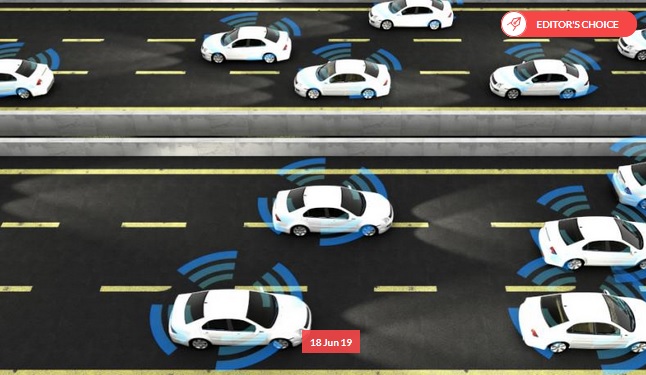
4 Big Hurdles for autonomy in smart cities
The role of autonomous vehicles is yet to fully play out and some of the key attributes of autonomy will be the cause of many U-turns on the highway to completion of smart city programmes. In the last 10 years, full urban mobility has moved from the realm of science fiction to a conscious design feature in smart cities. Carsharing, ridesharing, integrated public transport and pedestrian friendly shopping precincts are becoming standard features. Yet there remain four key areas that are yet to be addressed completely: congestion, competition, infrastructure and regulation.
Hurdle 1 – Congestion
One of the least understood drawbacks of autonomous vehicles is their potential to increase (yes, increase) congestion.
In the current environment, the ownership of a vehicle means that the vehicle is at your beck and call. It waits patiently in your garage or driveway and when you wish to use it, it’s there ready for you. It’s a powerful incentive to own.
Full autonomy removes this incentive by creating intelligent, connected, autonomous cars. Within a relatively short period you can expect that block-by-block the vehicle network will know what the likely demand is, where it will come from and have vehicles on stand-by where they are needed in all but the most extraordinary of circumstances.
So how does this create more congestion? In two ways.
First, to meet demand in a peak period, a larger number of vehicles are required than usual. Second, autonomous vehicles will be seen as assets generating revenue. Once you have that asset, it’s best to keep it on the road where it is more likely to make a return. What that means is that there is a temptation to have all vehicles on the road at all times.
There are ways to combat this, as we’ll see in a moment, but congestion is a significant issue that must be addressed for autonomous vehicles to work.
Hurdle 2 – Competition
As we’ve already seen, competition is likely to play a significant role in driving congestion up, but without competition it’s unlikely that we’ll see the pricing pressure needed to make autonomous vehicles cost effective.
Part of the difficulty is that a fleet of autonomous vehicles is more comparable to a public transport network than it is to a taxi network. Efficiencies will depend on asset owners having the ability to deploy resources with some assurance of a return.
Unrestricted competition could too easily lead to an excess of assets or to assets being deployed into smaller, more profitable locations, leaving many areas unserved. Part of the answer will be in the use of a centralised deployment system to ensure that vehicles are deployed according to algorithms that best suit the city rather than the asset owner.
Hurdle 3 – Infrastructure
Autonomous cars can operate in ways that are quite different from piloted vehicles.
One simple example of this is the practice known as “platooning” whereby vehicles are able to travel at high speed much closer together than would usually be the case. Each vehicle knows exactly where the other is and what the other vehicle is about to do so the need for a safe following distance is all but negated.
This level of connectivity also means that conventional traffic management measurements such as traffic lights or road signs are no longer necessary.
These changes however are only possible where roads are clear of piloted vehicles. A major challenge for smart cities will be the timing of the switch to “Autonomous Vehicles Only”.
Hurdle 4 – Regulation
As we’ve seen above, there are a variety of ways that autonomous cars will change the way we operate but the first step will be the legalisation of the cars themselves. The Vienna Convention on Road Traffic, signed in 1968 includes the principle that a driver is always in control of a car. This has meant that for EU countries (all of which are signatories) enabling legislation is required for self driving cars to use public roads.
Some progress has been made in this area, with many countries passing legislation that permits testing on public roads, but further steps will be required before the vehicles can come into common use.
Even in those countries where the convention does not apply, legislation will be required to remove ambiguities. Questions of liability need to be resolved and regulatory measures to ensure smooth operation must be put in place.
For smart cities, these regulatory measures must go even further, ensuring that vehicle owners and manufacturers comply with the cities’ objectives which will usually include improvement of ecological impact.
The time is now
The challenges presented by self-driving cars to smart cities are significant, but the benefit provided means that they are successful for the smooth operation. Only time will tell whether city authorities can successfully address issues of congestion, competition, infrastructure and regulation, but the time to act is now.
Author: Shane Curran
Source: https://www.globalfleet.com
 I´m a Fleet Management expert, and the manager of Advanced Fleet Management Consulting, that provides Fleet Management Consultancy Services.
I´m a Fleet Management expert, and the manager of Advanced Fleet Management Consulting, that provides Fleet Management Consultancy Services.
18º CURSO PARA LA GESTIÓN DE FLOTAS DE VEHÍCULOS-Barcelona 9-10-11 de Octubre 2019
Advanced Fleet Management Consulting, en colaboración con Jaltest, GantaBI, Optimatics y Transporte Profesional, organizan el “Curso para la Gestión de flotas de vehículos” con el fin de formar a los profesionales en gestión de flotas a tomar una visión global y conocer todas las actividades y factores clave involucrados en la gestión de una flota de vehículos. El curso es único en España y presenta un enfoque innovador al desarrollar una metodología propia para la gestión de flotas de vehículos.
Pincha en el siguiente enlace para saber más:
18º CURSO PARA LA GESTIÓN DE FLOTAS DE VEHÍCULOS-Barcelona 9-10-11 de Octubre 2019



